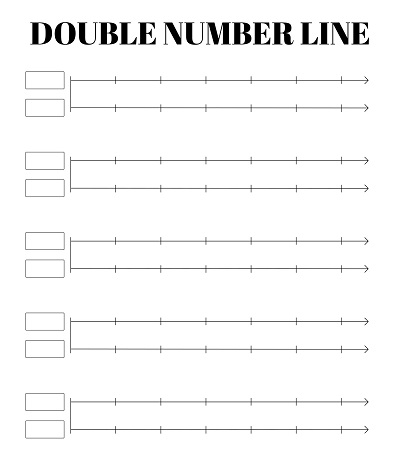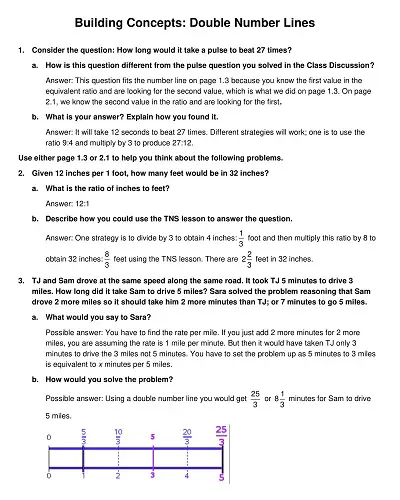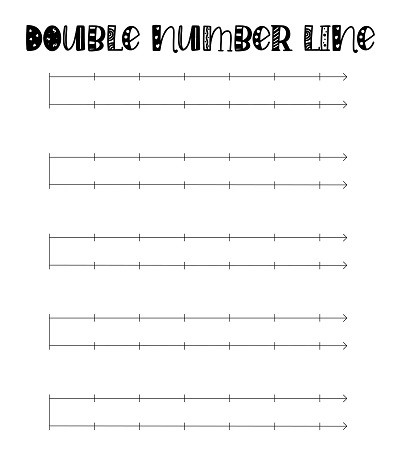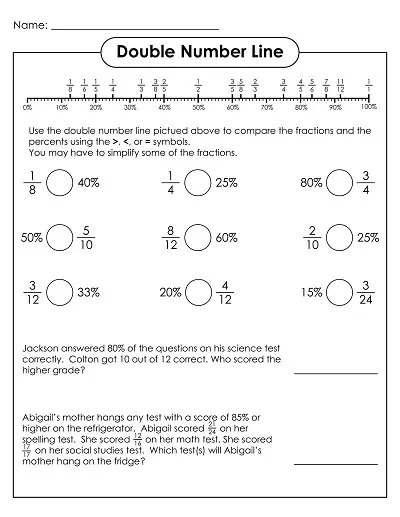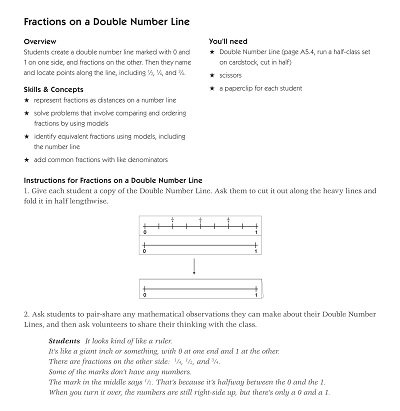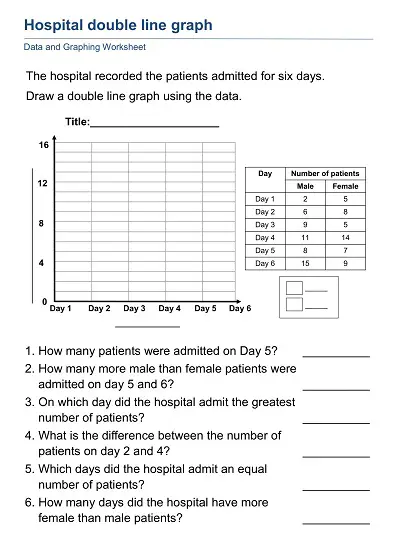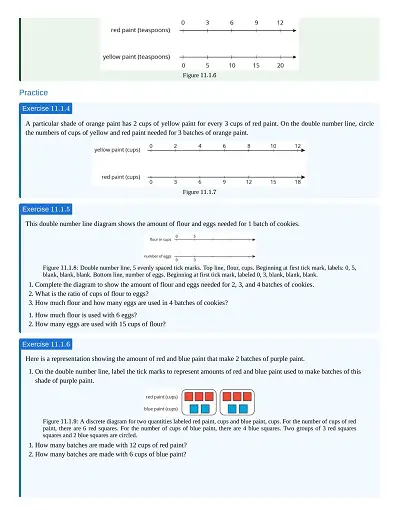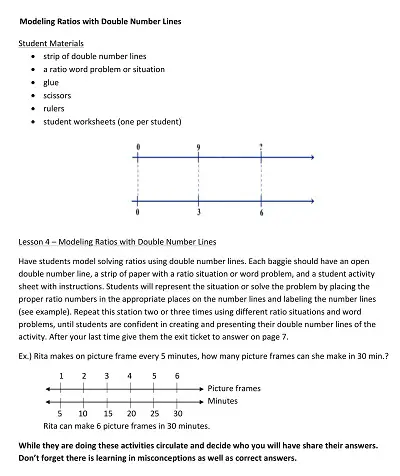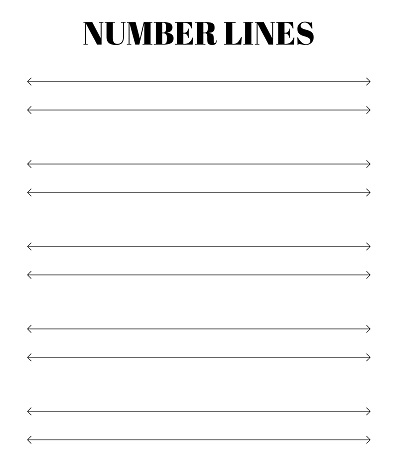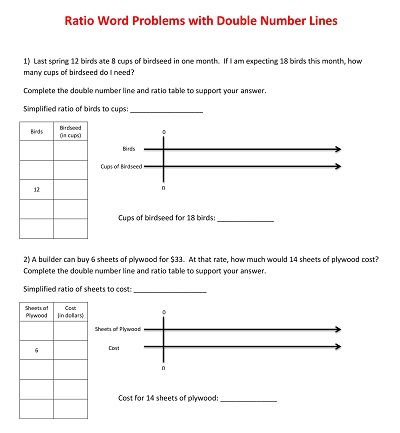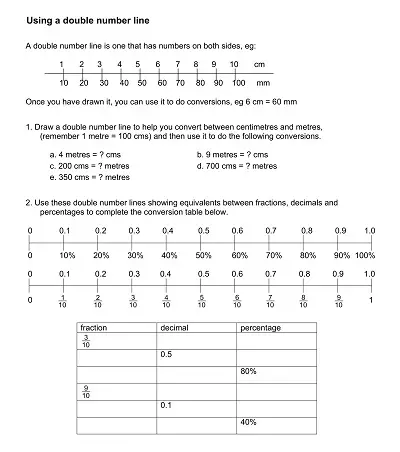15+ Free Double Number Line Worksheets PDF
The double number line, also known as the split number line or broken number line, is an incredibly useful educational tool for visualizing mathematics. It can be used to model, compare, and check subtraction and addition sums or equations, as well as other math operations like fractions and decimals. The double number line works both conceptually and practically in teaching a variety of math skills that lead to deeper understanding.
Table of Contents
Teachers can teach early numeracy concepts by having students use manipulative objects on the line to represent a mathematical problem they are solving while more advanced classes can use it to practice number representation in digital form. Overall, the double number line provides an effective learning environment that deepens students’ understanding of key mathematical concepts making them more confident in their abilities to succeed in understanding future math coursework.
Download Free Double Number Line Worksheet
Types of Double Number Lines
A double-number line is a visual representation of related equations. It is composed of two separate number lines that are connected together, forming one continuous line. These double number lines can help students understand the relationships between equations and the relationship between numbers in general. Here are some different kinds of double number lines and how they can be used to explain various topics in mathematics.
Standard Form Double Number Line
The most basic type of double-number line is the standard form. The standard form consists of two vertical lines that are parallel to each other, with a dotted line connecting them at their respective origins (0, 0). The upper line represents positive values, while the lower line represents negative values. This type of double-number line allows students to visualize the relationship between two equations or sets of numbers in a linear fashion.
Compound Equations Double Number Line
In compound equations, there are two or more equations that must be solved simultaneously to find a solution for both equations. A compound equation double number line allows students to visualize these multiple equations side-by-side on one continuous line. Each equation will have its own separate set of axes and labels that indicate which equation it belongs to. By plotting each equation’s points on the same graph, students can visually see how they are related and how they interact with each other.
Inequalities Double Number Line
An inequality double number line consists of two vertical lines that represent an inequality such as “x > y” or “x ≥ y”. On one side of the inequality symbol (>, ≥), all values must be greater than or equal to those on the other side (y). Students can use this type of double number line to plot points on either side and then visually compare them to determine which values satisfy the inequality statement.
Creating a Double Number Line Worksheet in 7 Steps
A double-number line worksheet is an excellent tool for teaching math to students. It visually and conceptually presents the idea of comparing two numbers, fractions, decimals, or even expressions. The process of creating a double number line worksheet can seem daunting at first, but it’s actually quite simple. Here are 7 easy steps to create your own double-number line worksheet.
- Step 1: The first step in creating your worksheet is to brainstorm what type of information you want to cover. Do you want to focus on fractions? Decimals? Expressions? By focusing on one topic, you will have greater success in creating an effective and comprehensive double-number line worksheet.
- Step 2: Once you have chosen your topic, it’s time to set up the worksheet itself. This includes adding titles and labels for each axis of the graph and formatting the space between each tick mark so that the values are accurately represented on the graph. You should also consider adding color coding or symbols to make the data easier to interpret.
- Step 3: Now that your workspace is all setup, it’s time to choose which data points you will include on your worksheet. When selecting data points for a double number line worksheet, be sure to choose numbers that are related in some way (e.g., fractions with common denominators). This will help students easily compare and contrast different values as they work through their assignments.
- Step 4: Now that you have chosen your data points, it’s time to plot them onto your worksheet. Start by labeling each point with its corresponding value (e.g., 1/2 or 0.5) then draw connecting lines between each point along both axes of the graph until all values are plotted correctly onto the graph. Be sure not to overcrowd any one area of the graph; instead, spread out your data points evenly along both axes so that they are easy for students to read and understand when completing their assignments.
- Step 5: Adding Additional Information If desired, add additional information such as descriptions or examples of how certain values relate or how they can be used in real-life scenarios (e.g., describing how two fractions can be added together). This will help students gain a better understanding of how different numerical values interact with one another as well as give them more context around why certain answers may be correct or incorrect when completing their assignments.
- Step 6: Formatting Your Worksheet Make sure all text is easy to read by increasing font size if necessary and adding bolding/italics where appropriate (e.g., use italics for variable names). Additionally, add boxes around important sections such as question prompts and answer choices so that these sections stand out from other parts of the page and draw students’ attention accordingly when working through their assignments.
- Step 7: Proofread & Print Finally, proofread your entire document one last time before printing out copies for students! Check for any typos or errors in formatting/alignment then print out copies once everything looks good your students will thank you.

